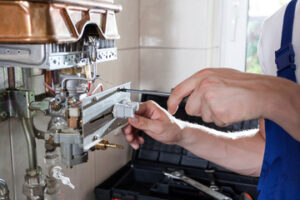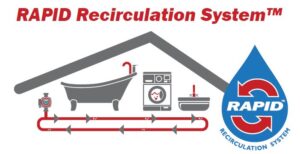A heating system that works appropriately keeps your home comfortable during winter. If your heater isn’t working correctly, it may need to be repaired or replaced.

Keeping up with basic maintenance tasks will help extend the life of your heater. However, there are some warning signs that you should watch out for. These include a lack of warm air, strange noises, and shorter heating cycles. Contact Heater Repair Los Angeles for professional help.
The thermostat is the brains behind your heating system. Understanding how it works can help you spot issues with the device before calling for Heater repair services. Thermostats are susceptible to a variety of problems, but many of these can be resolved with simple DIY steps.
The first sign of a problem with your thermostat is when the digital display goes dark. This means that the thermostat is no longer receiving power and needs new batteries. If you’re unsure how to replace the batteries, consult your user manual for guidance. Once the batteries are replaced, your thermostat should return to normal functionality.
Another common cause of a malfunctioning thermostat is a tripped circuit breaker. The breaker in your electrical panel controls the amount of electricity that is supplied to the thermostat. When a breaker trips, it interrupts the flow of electricity and stops your HVAC from functioning. To fix this, simply locate the breaker in your electrical panel that is dedicated to your thermostat and switch it back on.
A faulty sensor can also be the cause of a thermostat’s failure to function properly. This can occur if the sensor is obstructed, dirty, or damaged. If you suspect this to be the issue, consult your user manual for assistance locating the sensor and ensuring that it is clean, unobstructed, and free from damage.
The final common thermostat problem is a lack of proper connection between the thermostat and fan. This can be caused by a loose or broken wire, a corroded terminal screw, or an improperly configured wiring. If you are comfortable working with electrical components, you can manually test the connections by shutting off the power and removing the thermostat cover. Next, use canned air or a soft artist brush to clear the cover of any accumulated dust and dirt that may be impeding the thermostat’s ability to send signals to the fan.
Low Airflow
A common issue that can lead to an emergency heating repair is a lack of air flow. This is a big problem because the heating system needs to work hard and use more energy if it doesn’t get enough air to circulate. This will cause the heater to break down or overheat. Over time, it could also lead to a dangerous situation like carbon monoxide leaks.
The main cause of low air flow is a dirty or clogged air filter that restricts the flow of air through the system. It’s a good idea to change or clean your air filter every month or so to keep it from becoming too clogged and blocking the flow of air. Another cause of low airflow is a broken blower fan that’s not pushing the heated air out of your house through the ductwork.
Furnaces are forced-air systems that use a fan to distribute the heat they create throughout your home. The fan is responsible for blowing the warm air into your rooms, so if it’s not working properly, your entire house won’t be warm. A lack of airflow also means your furnace will need to work longer and harder to warm up your home, which will increase your monthly energy bills.
You might also notice that some rooms in your house are much colder than others, which is usually a sign that there is a problem with the damper valves. The only way to diagnose this is by having a professional HVAC technician perform an inspection and make the necessary repairs. If you smell a musty or burning odor, it’s a good indicator that there is an electrical or other type of problem with your heating system.
Strange Noises
Strange sounds that don’t usually occur from your heater could be a sign that it needs to be repaired. While a low humming sound is typically associated with heater operation, any other noises should be considered a warning signal that something is wrong with your system. If ignored, these sounds can lead to a more severe system breakdown and expensive repairs.
If you hear rattling sounds coming from your heating system, it is a good idea to have a professional inspect the situation as soon as possible. Rattling is generally a sign that there are loose panels or other components in the system. This can create a potential fire hazard and may also allow dangerous carbon monoxide to leak into your home.
Screeching and scraping sounds are also bad news for your heater. This sounds like metal grinding against metal and can indicate that the blower fan is loose and dragging on other parts of the system or that bolts have come loose in the motor compartment. It could also be a sign that the bearings are dry and need routine lubrication.
If you hear a loud banging sound when you turn on your furnace, this is an indication that the ignition or pilot light has malfunctioned. This is a serious problem that requires immediate attention from a professional because it can lead to an explosion of your entire system.
High Energy Bills
If your energy bills are skyrocketing, there’s a good chance that your heater is the culprit. In addition to the age of appliances, your furnace may be running inefficiently, and a professional inspection can help you identify problems such as a thermostat wired incorrectly or dust deposits that reduce efficiency.
Regular maintenance is the best way to prevent energy-wasting issues, which can lead to high electricity bills. For example, your HVAC system won’t run efficiently with a dirty air filter and should be cleaned quarterly to improve performance. One yearly heating tune-up also helps keep your energy costs under control by identifying and repairing any potential problems before they impact the system.
Investing in smart thermostats and duct sealing can also significantly cut your electricity costs. These upgrades allow for precise temperature control, remote access through smartphone apps, and energy-saving scheduling. Adding home insulation is another excellent way to lower your energy consumption. It keeps warm air from escaping through walls and ceilings, and nine out of 10 homes are under-insulated.
In many cases, high energy bills are related to simple maintenance tasks that people often neglect or forget. For instance, it’s critical to change the air filter in your HVAC system on a regular basis and to have your system professionally inspected once per year to ensure that it is operating efficiently. It is also wise to have any leaking windows or doors caulked to stop precious heated air from escaping your home. If you do this, you’ll be surprised at how much your energy bills will decrease.
Dust Deposits
Dust can be a major problem for any heater, especially when it gets into places it shouldn’t. One of the biggest problems is that dust can block or hinder the flow of air into your system, reducing its efficiency and creating other issues like clogged filters.
Dirty ducts are another huge issue. Your ducts are the vessel through which air moves throughout your home, and they’re naturally going to pick up a lot of dust, hair, microorganisms, pet dander, and other particulates from the air. If you haven’t cleaned your ducts in a while, these particles are going to bypass your air filter and end up inside your furnace and its various components, where they can build up and cause all sorts of problems.
Look around your ductwork for signs of dust, which can be easy to spot. You may see dusty, fuzzy areas around your vents or a musty or burning smell. If you notice any of these, schedule a tune-up to clean your ducts and seal any leaks.
When you do, expect reduced energy bills thanks to increased efficiency and a cleaner, healthier, more comfortable home. You’ll also cut down on any issues that can be caused by clogged or blocked ducts, such as musty or burning odors and carbon monoxide leaks.
